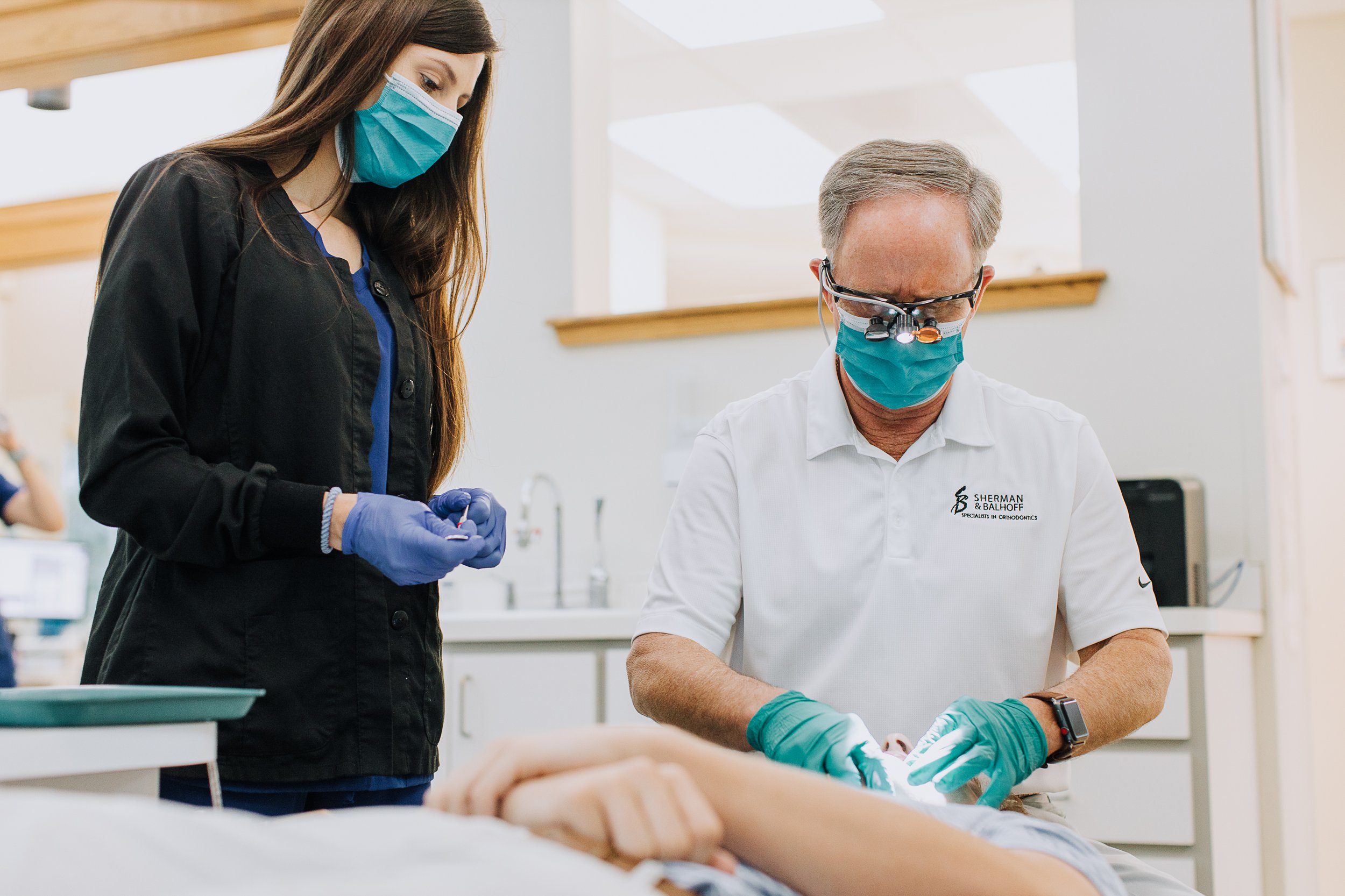In short, yes. While thumb sucking or pacifier use is one of an infant’s natural reflexes, prolonged sucking can exert force on the teeth and jaws. If your child sucks a thumb, finger, pacifier, or lips, their teeth or jaw growth may be affected (some bone changes can actually occur as early as 18 months).
Common orthodontic problems caused by prolonged thumb sucking or pacifier use can include:

-
Protruding front teeth: front teeth that stick out (“buck” teeth). Protrusive front teeth may make it hard to comfortably close the mouth and lips, cause speech problems, and make them more susceptible to trauma.
-
Open bite: when the upper and lower front teeth do not overlap, which can create swallowing or speech problems.
-
Crossbite: upper teeth that fit inside the lower teeth. If not corrected, the jaw can shift to one side causing lopsided jaw growth.
What to do if you notice prolonged thumb sucking or pacifier use
Consult your orthodontist. They will be able to identify any orthodontic related issues caused by the oral habit and can offer early treatment options to help your child break the habit and correct any problems that may have occurred. Orthodontists have been specifically trained in dentofacial orthopedics. In other words, they can help jaws grow and develop in better positions.
Seeing an orthodontist at a young age will allow them to help your child:
-
Correct harmful oral habits
-
Guide jaw growth
-
Lower the risk of trauma to protruded front teeth
-
Guide permanent teeth into better positions
Sherman & Balhoff

You can work with our team of doctors here at Sherman & Balhoff to achieve a healthy, beautiful smile at any age. Our Orthodontists are experts in orthodontics and dentofacial orthopedics – properly aligned teeth and jaws – and possess the skills and experience to give you your best smile. All of our consultations are free, and you can even get a consultation from home or work by clicking here.
Chances are you’ve been learning about the benefits of good oral hygiene since you were first introduced to a toothbrush as a child. We all know brushing our teeth should be a part of our daily routine, but the benefits of good oral hygiene go far beyond fresh breath. Good oral hygiene is the number one way to prevent gum disease, a condition afflicting nearly half of American adults according to a study by the American Academy of Periodontology.
This statistic alone is alarming, but it gets worse as more and more studies are linking the inflammation of gum disease with other conditions such as diabetes, stroke, heart disease and cancer – all epidemics in our country.
We’d like to combat periodontal disease, as well as improve your overall health by explaining the benefits of good oral hygiene. It’s up to you to make the change, and we are here to help!
The Benefits of Good Oral Hygiene
-
Reduce the chance of tooth decay
-
Reduce tooth sensitivity
-
Reduce the likelihood of cavities, and the resulting fillings
-
Preventative care is always less expensive than emergency care
-
Keeping your teeth (rather than needing dentures or crowns) is more likely
-
Fresher breath
-
Reduced chance of root canals and oral surgery
-
Better gum health
-
Lowered risk of cancer
-
Lowered risk of stroke
-
Lowered risk of heart disease and heart attack
-
Healthier pregnancy and stronger fertility
-
Lower risk of Type 2 Diabetes
-
Lower risk of developing Alzheimer’s disease
Overall, good oral care results in a healthier mouth and a healthier body!
Recommendations for Good Oral Hygiene
The basis of good oral hygiene starts with good home care. The American Dental Association recommends:
-
Brushing teeth twice a day with fluoride toothpaste
-
Flossing at least once a day
-
Drinking water between meals
-
And of course, seeing your dentist on a regular basis
Remember orthodontic treatment is suitable for patients of all ages. Treatment can be accomplished with minimal discomfort and in a reasonable time period that can have lasting results. Now that you know the truth about braces, feel comfortable to go and enjoy life.
Ceramic braces and metal braces use a similar design to achieve straight teeth and a healthy smile, but the major difference is the material the brackets are made from. Ceramic braces are often preferred over metal braces by older teens and working professional adults who want to straighten their teeth without the appearance of metal braces





